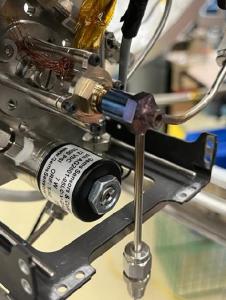Innovative Propulsion Systems for cubesats and microsats
Programme
TDE
Programme Reference
T719-602MP
Prime Contractor
UNIVERSITA DI PISA
Start Date
End Date
Status
Contracted
Country
Italy

Objectives
To assess the most innovative propulsion systems for cubesats and microsats applications.
Description
With the underway exploitation of cubesats and microsats for commercial, Science and Earth Observation missions and the ongoing development of super-constellations of Micro/minisats, it has become obvious the need to develop European, reliable, affordable and yet performing Propulsion Systems serving these class of satellites. The introduction of propulsion functions on these classes of satellites is dramatically enhancing their performances and utilisation perspectives.
The European Propulsion Systems currently available at technology concept level, shall be capable of satisfying the needs of cubesats and/or microsats for drag compensation, plane altitude changes, decommissioning, whilst respecting their resource constraints and meeting their challenging cost targets. Such Propulsion Systems should have:
- Mass"/(volume) limited to 1kg/(1U) for cubesats and 10kg for microsats,
- Recurring prize lower than <50k? for cubesats and <100k? for microsats,
- Target delivery time of less than 6 months from ordering.
The most promising propulsion concepts shall be assessed, in terms of performances, limitations and criticalities, at the ESA Propulsion Laboratory (EPL) in a dedicated facility or in another equivalent facility. Delta developments required to increase the confidence of Propulsion Systems for cubesats and/or microsats shall be identified.
In order to get a good understanding of the European capabilities, up to 3 parallel contracts might be considered, for a maximum of 250KE per contract.
Application Domain
Generic Technologies
Technology Domain
19 - Propulsion
Competence Domain
7-Propulsion, Space Transportation and Re-entry Vehicles
Initial TRL
TRL 2
Target TRL
TRL 3
Achieved TRL
TRL 4
Public Document
Final Presentation
Executive Summary
